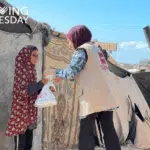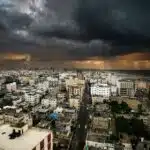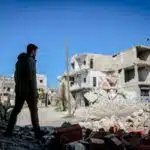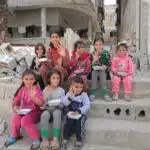The inhuman persecution of minorities is heartbreaking. It makes you question such barbarity. Thus, I conducted research on the Rohingya Crisis which reflects their predicament. This article attempts to throw more light on the current state of the Rohingyas.
Who are Rohingya?
The Rohingya are a minority Muslim ethnic group. They come from the Rakhine state of Myanmar. Very few of them are practicing Buddhists. They generally speak the Rohingya dialect. But, they may also speak English, Bangla, Burmese, and Chittagonian. They dress in the Indo-Burmese traditional style. Songs and musical plays are an integral part of their culture.
History of the Rohingya Crisis:
The Rohingya Crisis dates back to the 1940s. At that time, Myanmar (Burma) gained independence from the British. The British policies motivated many Rohingya to migrate to Myanmar. Often recruited in the rice fields, their population grew. The Muslim population reportedly tripled in the 1870s because of such migrant activities.
The British promised the Rohingya their separate land if they supported them. It was a promise they didn’t intend to keep. The Rohingya sided with the British during World War II. But, the Myanmar nationalists were on the Japanese side. Their reward was prestigious government positions but no land at the war’s end.
After the fall of colonialism, the Rohingya continued to demand an autonomous state. But the Rohingya association with the British bred resentment towards them. The Nationalist government regarded them as foreigners. In 1950, the army quashed a Rohingya revolt demanding an autonomous state. They endured a series of attacks. It forced them to flee to Bangladesh, Malaysia, India, Thailand, and Indonesia. A more significant percentage of the Rohingya are refugees in Bangladesh.
Rohingya Fleeing for Safety
The 700,000 who recently fled in 2017 joined others who had earlier run. They found homes in the Kuputalong Camp (in Cox’s Bazar district)in Bangladesh. Kuputalong became the biggest refugee camp in the world. It houses over 880,000 Rohingya refugees.
Citizenship Act and Rohingya:
The enactment of the Citizenship Act of Myanmar took place in 1982. According to this act, a national group or race that existed before British rule are citizens. A census confirms the presence of an indigenous ethnic group, ‘Rooinga.’
Some claims assert that the Rohingyas had lived in the Rakhine state of Myanmar as far back as the 12th century. Myanmar has not considered any of these claims. The country consistently denied Rohingya citizenship. They are instead viewed as illegal immigrants or, at best, ‘ resident foreigners. Bangladesh, where many Rohingyas have had to flee, do not consider them as citizens either. As such, the Rohingyas are stateless and deprived of any government protection.
Rohingya Treatment in Myanmar:
Rohingya children born outside Myanmar are not considered citizens of these countries. Those who choose to stay behind in Myanmar suffer deprivation of benefits. They are subject to restrictions. They do not enjoy quality healthcare, education, or employment. There are government restrictions on the number of children they should have. They can have only 2 children. They need to seek permission to marry. This process involves presenting a photo of the bride and a clean-shaven-faced groom. Both practices do not agree with Muslim customs. They also need permission to move or travel out.
Rohingya Genocide:
The news of fleeing Rohingya refugees caught the world’s attention in 2017. Even so, the television scenes of the March 2021 fires jolted the world’s conscience. Before then, Cox’s Bazar was familiar only to the humanitarian community. They had been grappling with the weight of this catastrophe for years. There are claims that the refugees had started making their way to Bangladesh as far back as the 1940s. Some documented reports show that they had begun to arrive in Bangladesh for help in 1977. At that time, Myanmar launched ‘Operation Dragon King’. It stripped the Rohingya of their citizenship status. Moreover, it led to mass arrests and persecution of the group.
There is also pictorial evidence of refugees in Dumdumia Camp, Cox’s Bazar in 1992.
Start of Genocide
In 2017, the Buddhist indigenes faced reprisal attacks from the Myanmar army. This forced 700,000 Rohingya refugees to seek refuge in the town. Earlier, a group of Rohingya insurgents attacked police posts. It killed 12 members of the security forces in the process.
The Myanmar army and the locals unleashed vengeance on Rohingya homes and property. Rape, sexual slavery, torture, kidnappings, and the killing of civilians were reported. Unverified reports claim that over 1,000 Rohingyas lost their lives in the 2017 brawl. Others who barely managed to survive joined in the mass exodus to Cox’s Bazar.
Repatriation Agreement:
In 2018, Bangladesh and Myanmar signed a repatriation agreement. Rohingya refugees were not eager to return to Myanmar. They were skeptical of their warm gesture who they once regarded as neighbors. Rohingya leaders were not convinced of the sincerity of the process. They demanded safety upon their return to the Rakhine state. Their reinstatement of citizenship before any consideration would be given to repatriation.
On the other hand, Myanmar held fears that the Rohingyas could turn rebellious. They could solicit support from neighboring Islamic countries. The Myanmar government refused to let down its guard. Thus, it was no surprise that the repatriation agreement had little success. The Myanmar government refused to let down its guard. Thus, it was no surprise that the repatriation agreement had little success. The January 2021 coup in Myanmar slowed down the resuscitation of repatriation talks. Both governments have only begun talking again in February this year.
Struggles of Rohingya in Refugee Camps
Fires are not the only obstacles the Rohingyas who have managed to flee Myanmar face. Bangladesh struggles with inadequate resources to cater to the needs of the refugees. The camps are overpopulated, and poor sanitary conditions abound. The risk of an outbreak of disease is always high. Inadequate medical facilities can exacerbate the danger. The available water supply is often contaminated and spreads waterborne diseases. Floods also contribute to rendering refugees homeless again. Most of the population is illiterate.
Children do not have access to primary education. There are prohibitions on teachers from using both the Bangladeshi and Myanmar curricula. Children are not allowed to enroll in schools outside the camp. Camp occupants are barred from working outside the center. The Bangladeshi government sped up construction at Basan Char in 2019.
Approximately 20,000 Rohingya refugees were ousted to the Island without any consent. They are not allowed to leave the Island with UN communication restrictions.
Humanitarian Aid to Rohingya:
Refugee rescue cases at sea are on the rise. Yet, their reunion with families is not adequate. The government overlooks the outcry and concerns about the safety of the Island. Bangladesh received criticism for handling the crisis. Notably, Bangladesh was once the only country that accepted refugees. At that time, others had turned their backs on them.
Support for Rohingya:
Repatriation is a step in the right direction. The underlying issues should be resolved. Villages have reportedly been razed down. There are accommodations and construction of police barracks, buildings, and refugee camps. They will not be returning to the security of having homes and lands to call their own.
In 2021, the military takeover put the Rohingya in a precarious situation. The military was at the helm of affairs. The group has legitimate reasons to fear repatriation agreements. But, the agreements may be disregarded in favor of military promulgations.
Prejudices do not fade with government pronouncements. Effective measures should be in place to ensure that citizens obey the law. Discussions between the Rohingyas, Buddhist neighbors, and the Myanmar government. It can ease fear and build trust. The government tackles the concerns of the Rohingyas.
Options for the Rohingyas today are limited. They can either embrace the hardship of refugee life or stay at ‘home’ and remain oppressed. I sincerely hope the story will not be the same in a year or two.








